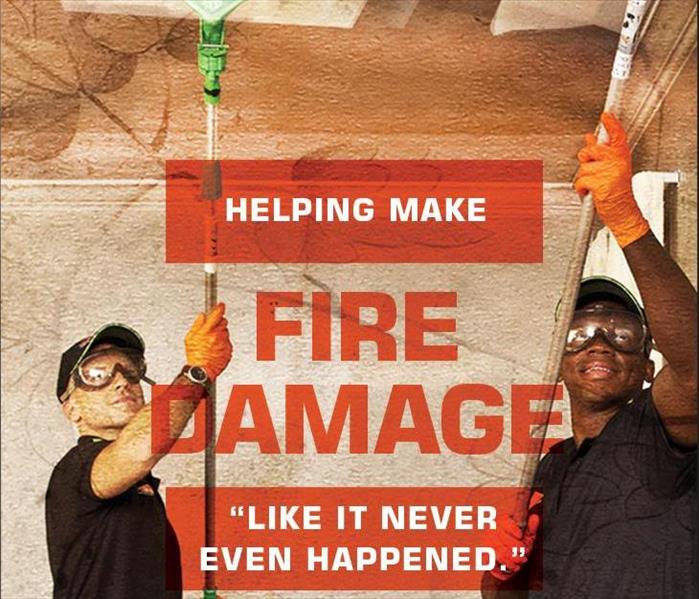Fire Damage Process
3/7/2019 (Permalink)
Fires are some of the most sudden and destructive occurrences that can happen to your home or property. It is an unfortunate and stressful time for you and your family, so it is important to discuss the necessary steps to remediating your fire damage and getting your life back on track in the fastest and most convenient manner for you.
A fire damage in your home, much like a water damage, could be from a number of causes. There could be an electrical fire caused by faulty outlets, a kitchen or grease fire caused by accidents when cooking, or could be the result of lightning striking your home.
As there are a number of causes, there could potentially be a number of ways we go about your remediation.
First it is important to outline how the fire process differs from the water mitigation process. When you have a fire in your home, please do not call us first! Call 911 and have your local fire department come to take care of the problem. When that is complete is when we can begin our mitigation work.
The fire department, depending on the severity of the fire, will be the ones who determine when a mitigation company can enter the property. It is fine to call us and give us your information so we can prepare, but we cannot come out to begin your scope until the fire department clears the area as safe.
Now that we have been given permission to enter the building, our work operates a little differently than water mitigation jobs. Whereas we can usually get moisture readings and begin mitigation the same day, fire damages are typically a slightly slower process.
It is assumed in a water damage that your house is fine, and whatever work we do inside will be restoring that house. Fire damages aren’t quite so simple.
Adjusters may need to come inspect the property to deem whether or not the structure is salvageable or not. Similarly, a lot of items that were affected by the fire will be either deemed salvageable or unsalvageable, and your adjuster may want us to come up with that list before we continue work. This process of doing inventory and inspecting every one of your possessions is to determine what we can clean and what we cannot clean is the first important step to getting your restored to pre-accident condition.
Once we understand what can be cleaned, and what will need to be replaced, the next step of the process is called a pack out. This is essentially moving your items that will be cleaned to our safe storage facility so that we can best clean them. This happens for two reasons.
First, we oftentimes need to use an ozone machine to get the entirety of the smoke odor out of your items.
Second, the floors, walls, and ceilings of your house are more than likely also affected by smoke odor. This means if we can your dresser and leave it in your room, the smoke odor will permeate back into the item leaving you in the same situation. It is also easiest to do all of the surface cleanings; your walls and ceilings, as well as carpet and duct cleaning while the areas are completely empty of other items.
After our extensive and exhaustive cleaning is finished, ensuring all of your items are restored to pre-fire condition, the final step before we can put everything back in your house is repairing or replacing any damaged parts of your home.
Whether drywall and ceiling have been burnt during the fire, or your vent hood in the kitchen needs replaced, we are here to help and have a number of professional contractors who specialize in restoration work that can make your home "Like it never even happened."
The final step, once all of this is complete, is to do a pack back. We return your items, clothing, furniture, and place everything back in your home like it was prior to the fire.
We understand this is a trying time. We will work in conjunction with your insurance to ensure that the fire that uplifted your life is in the past and you can move forward in your newly restored home.
Written by: Brendan Gillette



 24/7 Emergency Service
24/7 Emergency Service
